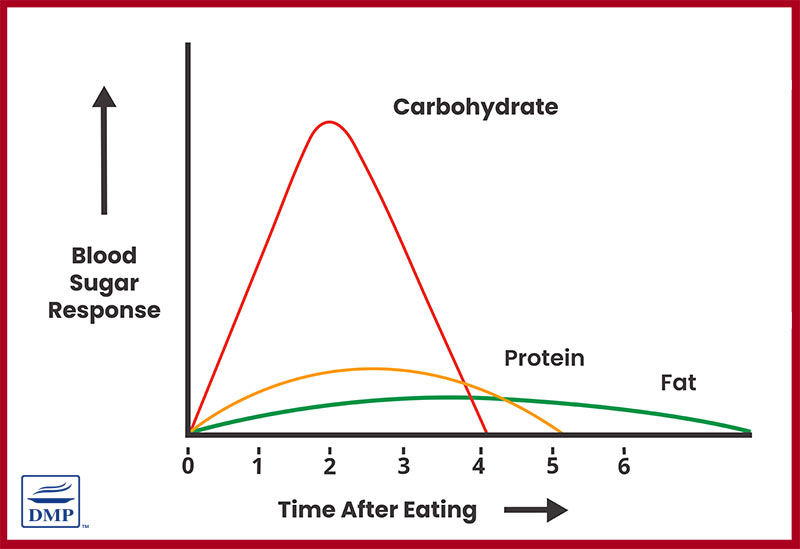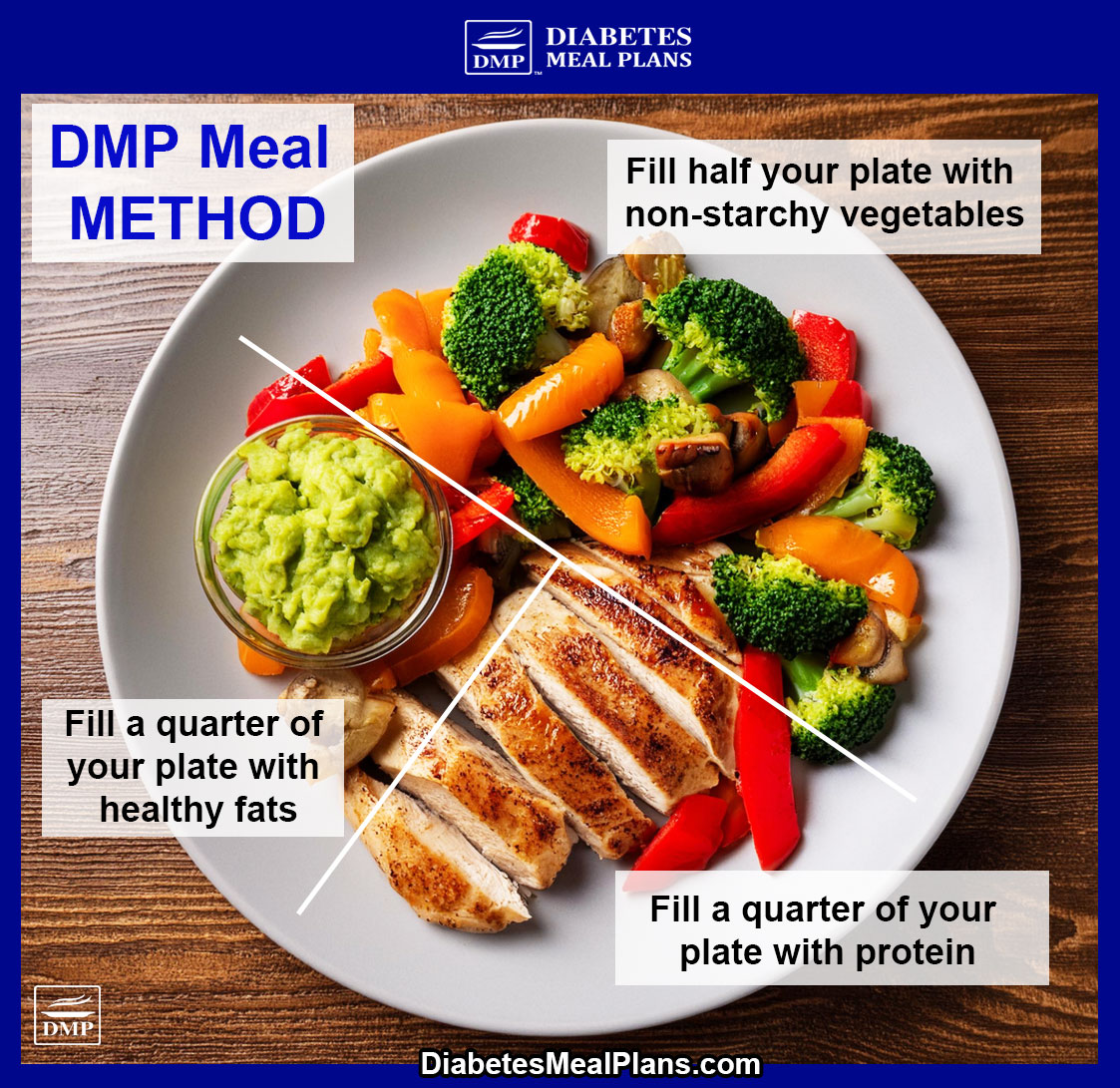Being diagnosed with prediabetes can be overwhelming and confusing. You’re probably wondering what you can and can’t eat, and how to make the best choices for your health.
Even if you’ve had prediabetes a while, you may still feel confused about what to eat. After all, there is so much conflicting information when you surf the wild west web.
The good news is that with the right guidance, you can manage prediabetes effectively and even prevent it from progressing to type 2 diabetes.
This guide will help you understand what to eat, how to plan your meals, and why certain foods are better choices than others.
NOTE: If you have questions not covered here, feel free to ask them below and our nutritionists will be happy to help.
Understanding Prediabetes
Prediabetes is a condition where your blood sugar levels are higher than normal but not yet high enough to be classified as type 2 diabetes. The diagnostic A1c range for prediabetes is 5.7% to 6.4%.
It’s a warning sign that you need to make changes to your lifestyle, particularly your diet, to avoid further health complications.
In fact, it’s an opportunity for you to get proactive and reverse your prediabetes!
The Role of Carbohydrates
Managing your carbohydrate intake is crucial because carbohydrates directly impact your blood sugar levels, more than any other nutrient.

Carbohydrates are found in a variety of foods, including fruits, vegetables, grains, legumes, and dairy products.
When you eat carbohydrates, your body breaks them down into glucose (sugar), which enters your bloodstream. Insulin, a hormone produced by your pancreas, helps your cells absorb this glucose to use as energy.

In prediabetes, your body becomes less effective at using insulin (a condition known as insulin resistance), leading to higher blood sugar levels.
Since carbohydrates spike blood sugar and insulin, the key to managing prediabetes is to monitor your carbohydrate intake and choose lower carb foods.
View How Many Carbs to Eat With Prediabetes here, or download a free copy of our recommended food list below.
What to Eat With Prediabetes: Focus on Low Carb Foods
A low carb diet limits carbohydrates, particularly those that cause rapid spikes in blood sugar levels and spike insulin levels. This eating approach not only helps lower your blood sugar back to normal but makes weight loss easy as well.
Here are some examples of low carb foods:
- Non-starchy vegetables: Broccoli, spinach, kale, tomatoes, zucchini and peppers.
- Proteins: Meats (beef, lamb, chicken, turkey), fatty fish (salmon, tuna, mackerel), and plant-based proteins (tofu, tempeh).
- Healthy fats: Avocado, olive oil, nuts, and seeds.
- Dairy: Cheese, Greek yogurt, and full-fat milk.
View the Best Prediabetes Foods To Eat here, or download a free copy of our recommended food list below.
Prediabetes Foods to Avoid or Limit
Certain foods can cause rapid spikes in blood sugar and insulin and should be limited or avoided:
- Sugary foods and drinks: Sodas, candies, pastries, and desserts.
- Refined grains: White bread, white rice, and pasta.
- Highly processed foods: Packaged snacks, fast food, and processed meats.
- High-carb vegetables: Potatoes, corn, and peas.
View the Key Foods To Avoid With Prediabetes here, or download a free copy of our recommended food list below.
The Importance of Fiber
Fiber is a type of carbohydrate that your body can’t digest. It helps regulate your blood sugar levels by slowing the absorption of sugar into your bloodstream.
High-fiber foods also make you feel full longer, which not only reduces hunger and sugar cravings, but can help with weight management.
Good sources of fiber include:
- Non-starchy vegetables
- Nuts and seeds
- Berries
- Beans and legumes (in moderation)

A Prediabetes Meal Method
Aim to fill half your plate with non-starchy vegetables, a quarter with lean protein, and a quarter with healthy fats.

This plate method helps ensure you’re getting a variety of nutrients without overloading on carbohydrates.
View a Sample Prediabetes Meal Plan here, or download a free copy of our recommended food list below – it has a 2-day menu and recipes!
Prediabetes Breakfast Options
When it comes to resetting your prediabetes blood sugar balance, breakfast often poses a significant challenge.
Many traditional breakfast options can spike blood sugar levels, making it crucial to find alternatives that are both delicious and nutritious.

For instance, you need to avoid or minimize boxed breakfast cereals, many breads, bagels, donuts and fruit juices, and opt for protein-rich food choices like eggs, meats, nuts and seeds, along with vegetables and fruits.
View a Collection of Breakfast Options for Prediabetes here, or download a free copy of our recommended food list below – it has a 2-day menu and recipes!
Staying Hydrated
Drinking plenty of water is essential for overall health and helps lower blood sugar levels and boost metabolism. Aim for at least eight glasses of water a day.
Most importantly, avoid sugary drinks and even diet sodas, as they will not provide you with any benefit.
Staying Positive and Proactive
Being diagnosed with prediabetes can be a turning point in your life, offering you the chance to make meaningful changes that can prevent the progression to type 2 diabetes.
By focusing on the nutrition principles and key foods outlined here, you can reset your blood sugar levels back to normal, lose weight and boost your overall metabolism.
So what are you waiting for? Get started by downloading a free copy of our recommended food list below.
Or, if you don’t want to waste time or take chances with your health, Join The Prediabetes Reset Program Today – it will fast track you to results and remove any confusions you may have. Plus, you’ll get personal help and support to make the changes.


Jennifer Peters
Just diagnosed with pre-diabetes
Dr Jedha
You’ll find lots of great info here Jennifer, to help you get your blood sugar and A1c levels back to normal and with prediabetes, it’s fairly easy with diet and nutrition. Or check out our VIP Membership – we have a 25% Off right now but this ends in a day, so it’s great time to join us.